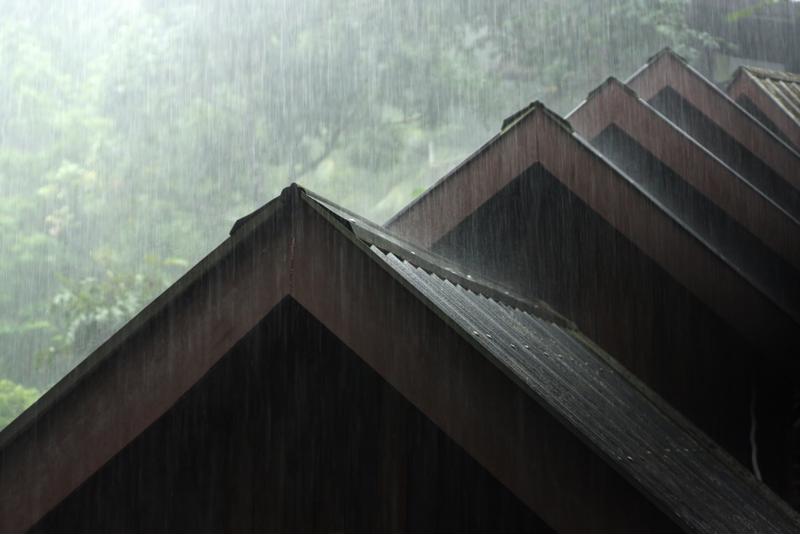A rain storm and a thirsty lawn seem to go hand in hand. Not only can you give your sprinkler system a rest and save some money, but if you live in an area that sees cloud cover more often than the sun, then you might not have to water your grass at all. You can just sit back as Mother Nature supplies your lawn with an essential ingredient – free of charge.
However, while rain can help your grass grow, you also need to know how it can make it more difficult to get the perfect cut when you head out with your state-of-the-art Husqvarna lawn mower. A few moist blades of grass probably don’t seem too dangerous when you’ve got some of the best lawn care equipment money can buy, but if you don’t know the ins and outs of how mowing too soon or too long after a rain storm can affect your grass, your lawn might suffer the consequences.
 Water damage is a homeowner’s worst nightmare – especially if it happens to your lawn.
Water damage is a homeowner’s worst nightmare – especially if it happens to your lawn.A little rain never hurt anybody
It’s true – while you might mess up your hair by getting caught in a storm without an umbrella, rain isn’t really a big concern in many people’s lives. However, if you care about your lawn and want to give it the best chance at growing thick and luscious this summer, you need to know how damp, soggy grass can actually make it more dangerous for you as well.
While a light drizzle probably won’t have much of an effect, stronger storms that drop measurable quantities of rain can turn tall grass into a mower’s worst nightmare. When moisture droplets adhere to blades of grass, they increase their weight by microscopic fractions. However, when you have millions or billions of tiny, weighted blades in your lawn, your lawn has effectively transformed into a strengthened version of itself – the taller and wetter grass grows, the less inexpensive models with cheap engines can keep up.
If you’ve ever tried to cut your grass when your lawn is still wet, you might have noticed that your machine’s blades aren’t turning as fast as they should or the engine is sputtering. These are signs that you should either wait until the moisture has a chance to evaporate or purchase a machine powerful enough to slice through the most water-logged lawns like the Husqvarna HU800AWD Walk Behind Mower. This mower’s 190-cc engine can chew through the tallest and wettest grass out there without a hitch.
“Mowing a wet lawn can leave you with an uneven cut.
A rough cut
Even if you have a whole fleet of Husqvarna lawn care equipment in your garage, failing to use these state-of-the-art tools properly will leave your lawn looking like you tried to cut it by hand with a pair of scissors. In fact, going out to mow when your grass is still wet will probably leave you with an uneven and unhealthy cut.
During heavy rainstorms, grass can get matted down to the dirt, either from the weight of droplets adhering to blades or from excessive moisture softening soil. Whatever the cause, this means that when you try to run your mower over your lawn, random patches might be bent out of the way of the blades. You’ll pass over without even trimming these spots, and when the sun has a chance to evaporate the leftover moisture, the grass will spring back up to its normal position. This could leave you with an unevenly manicured lawn that you have to go out and take care of a second time.
This might sound like a nightmare to any do-it-yourselfer who prides him or herself on the best looking lawn in the neighborhood, but even the wet grass that you do manage to cut can sabotage your mower. Moist grass is naturally sticky, and even though your mower’s blades turn faster than you can follow, wet blades will still adhere to the metal no matter how powerful your model is. Rain-soaked lawns also result in more roughly sliced blades, which reduces your mower’s power if it clumps together in critical areas. If you have a large yard, this buildup could actually block the cutting edges of the blades. When this happens, you’re not even cutting grass – you’re just out for a stroll.
How soon can you mow?
Part of the trouble with rain and your lawn isn’t avoiding going out there when everything is drenched – that’s just common sense. The trickier decision comes when the storm passes and you have to determine if your lawn is ready to handle a trim.
While you probably focus on the condition of your grass to tell when it’s ready, you should actually be looking at the soil. This will tell you how much water your lawn is holding. If it feels soft and spongy, your grass is still water-logged. The wheels of a mower could rip grass straight out of the ground in this state, which means you should wait until your lawn regains its old firmness.